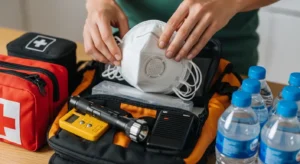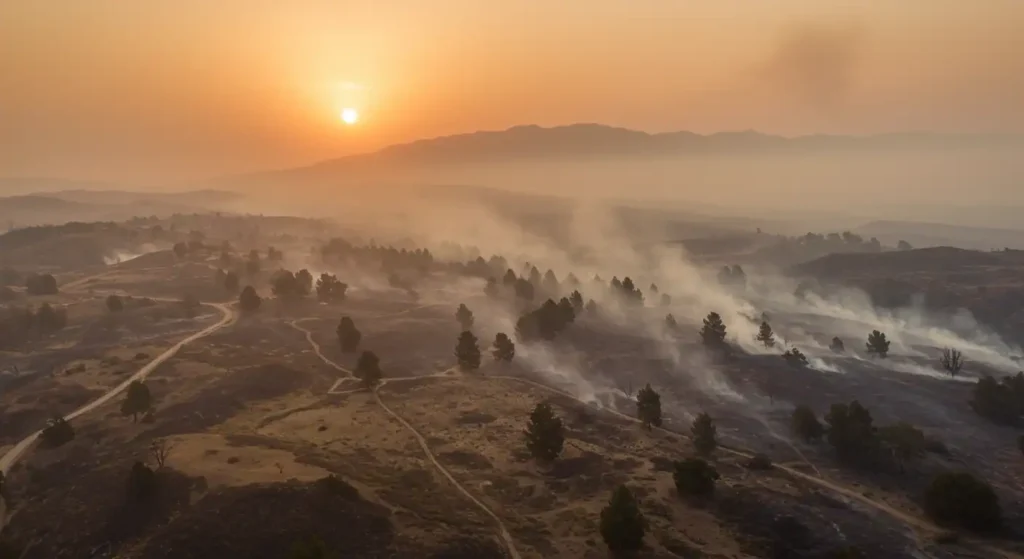Wildfire season has always been a part of life in California, but in recent years the scale and frequency of fires have transformed the state’s skies into hazardous zones. Smoke from these fires is more than a nuisance—it is a growing public health crisis. As wildfires intensify with climate change, the dangers of prolonged smoke exposure are becoming impossible to ignore. For Californians, understanding the risks and taking proactive measures is critical to staying safe.
The Growing Threat of Wildfire Smoke
 A recent study from Stanford University and collaborating institutions warned that wildfire smoke could contribute to more than 70,000 premature deaths annually in the United States by the 2050s. California, with its large population and frequent fire events, is expected to shoulder a disproportionate burden. Even today, smoke from massive fires travels far beyond the burn zone, spreading fine particulate matter (PM2.5) across cities, suburbs, and rural areas.
A recent study from Stanford University and collaborating institutions warned that wildfire smoke could contribute to more than 70,000 premature deaths annually in the United States by the 2050s. California, with its large population and frequent fire events, is expected to shoulder a disproportionate burden. Even today, smoke from massive fires travels far beyond the burn zone, spreading fine particulate matter (PM2.5) across cities, suburbs, and rural areas.
Unlike the visible ash we sometimes see falling from the sky, PM2.5 particles are microscopic and invisible to the naked eye. These particles can lodge deep into the lungs and even enter the bloodstream, creating long-term health problems that outlast the fire itself.
Who Is Most at Risk?
While wildfire smoke affects everyone, certain groups face greater dangers:
- Children: Their developing lungs and higher breathing rates make them especially vulnerable.
- Seniors: Older adults are more likely to suffer complications due to existing health conditions.
- People with chronic conditions: Those with asthma, COPD, or heart disease face heightened risks.
- Outdoor workers: Farmworkers, construction workers, and first responders are directly exposed for longer periods.
- Underserved communities: Limited access to air filtration, healthcare, or clean air shelters increases vulnerability.
Immediate Health Effects
Wildfire smoke exposure can trigger immediate symptoms, even in healthy individuals. These include:
- Eye irritation, sore throat, and coughing
- Headaches and fatigue
- Shortness of breath or chest tightness
- Worsening of pre-existing respiratory or heart conditions
Repeated or long-term exposure can lead to more serious outcomes such as chronic respiratory illnesses, reduced lung function, and increased cardiovascular disease.
Short-Term Protective Actions
During smoky days, Californians can take several steps to reduce their risk:
- Check Air Quality: Use real-time monitoring tools like AirNow or PurpleAir to track the Air Quality Index (AQI) in your area.
- Stay Indoors: Keep windows and doors closed. Use HEPA filters or portable air purifiers to improve indoor air quality.
- Limit Physical Activity: Avoid strenuous exercise outdoors when AQI levels are poor.
- Use Proper Masks: If you must go outside, wear an N95 or N99 respirator mask designed to filter fine particles.
- Create a Clean Room: Designate one room in your home with a HEPA filter as a clean-air refuge during heavy smoke days.
Long-Term Strategies for Resilience
While short-term precautions matter, California communities must adopt long-term solutions to combat recurring wildfire smoke events:
- Home Retrofits: Improve insulation, install air-tight windows, and upgrade HVAC systems with advanced filtration.
- Community Clean Air Centers: Local governments can establish safe spaces equipped with filtration systems where residents can gather during wildfire events.
- Forest Management: Increased investment in controlled burns, vegetation thinning, and early detection systems can reduce fire severity and, by extension, smoke exposure.
- Climate Mitigation: Addressing climate change through emissions reductions is essential to slowing the worsening of wildfire seasons.
Case Studies & Local Action
Several California communities are already pioneering approaches to deal with wildfire smoke:
- Sonoma County: Offers free HEPA filters to low-income families during fire season.
- San Francisco: Converted recreation centers into public clean air shelters during severe smoke events.
- School Districts: Across the state, schools are upgrading HVAC systems and stockpiling masks to protect students.
Practical Tips for Families
 If you live in a wildfire-prone area, prepare your household before smoke season begins:
If you live in a wildfire-prone area, prepare your household before smoke season begins:
- Stock up on N95 masks and portable air purifiers.
- Maintain a supply of necessary medications, especially for respiratory or heart conditions.
- Keep an emergency kit with food, water, and essentials in case of evacuation.
- Discuss evacuation routes and plans with your family, including pets.
Looking Ahead: A Healthier California
The growing threat of wildfire smoke reminds us that climate challenges are not abstract—they directly affect our health and communities. By combining individual precautions, community planning, and statewide policy, Californians can reduce the risks of smoke exposure. From cleaner homes to stronger public health infrastructure, solutions exist if we commit to them.
Wildfire smoke is more than a seasonal problem—it is a long-term challenge requiring resilience, innovation, and collective action. By preparing now, Californians can breathe easier tomorrow.
For more on California’s environmental policies, see our article on California’s New Water Conservation Policies and explore The Green Revolution: How California is Leading the Way in Sustainability.

